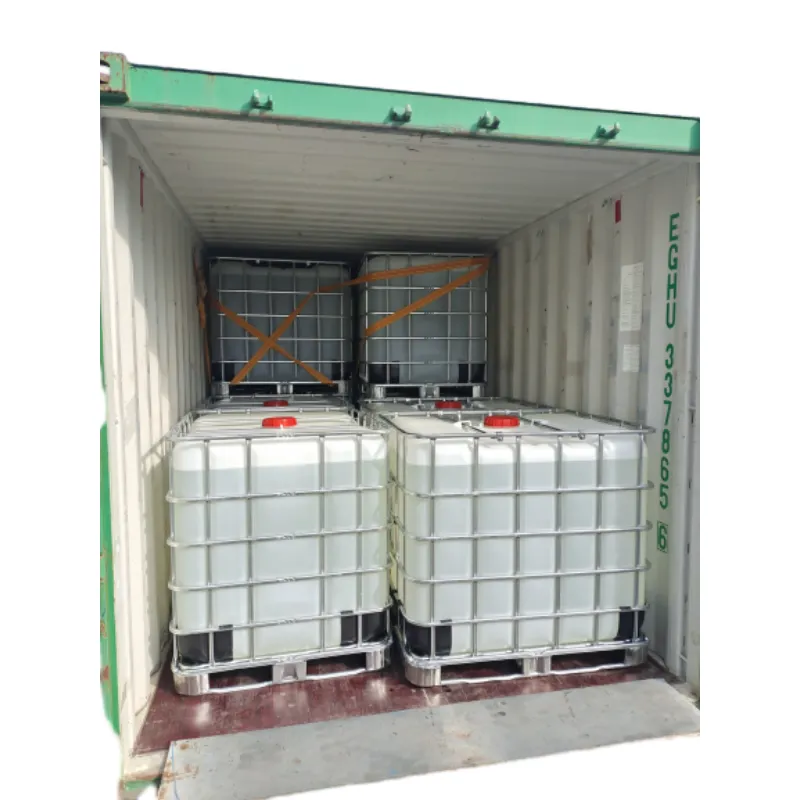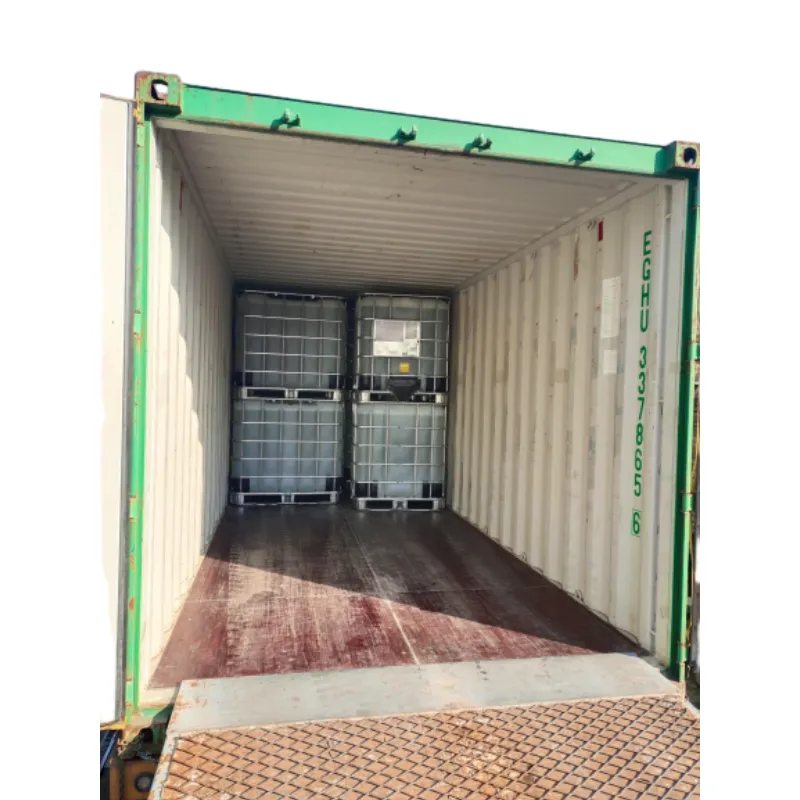
Triisopropanolamine TIPA | Cement Strength Aid, Neutralizer
Field Notes on Triisopropanolamine: what buyers really ask (and what operators actually do)
If you work in cement, coatings, or metalworking fluids, you’ve almost certainly bumped into Triisopropanolamine (TIPA). It’s an alkanolamine—amino plus three alcohol groups—that quietly does big work: neutralization, dispersion, and, yes, late-strength kick in cement. I’ve visited plants from Hebei to Houston; what people want is a reliable spec, honest data, and shipping that doesn’t slip. Origin here? 3-2-501, North Courtyard, West District, Jiuli Courtyard, Yuhua District, Shijiazhuang City, Hebei, China. That’s where the paperwork starts, not where the story ends.

Industry trend snapshot
- Cement: shift from pure TEA to blends where Triisopropanolamine boosts late strength and sulfate balance; lower clinker ratios push demand.
- Coatings: low-odor, low-VOC neutralization; customers ask for “amine-free smell” even when it’s an amine (yes, we all smile at that).
- Metalworking: better film persistence in semi-synthetics; balanced pH drift control.
Technical specifications (typical, real-world values may vary)
| Chemical name | Triisopropanolamine (TIPA) |
| CAS | 122-20-3 |
| Formula / MW | C9H21NO3 / ≈191.27 g/mol |
| Appearance | Colorless to pale-yellow viscous liquid |
| Assay | ≥85% or ≥99% (grade-dependent) |
| Water | ≤0.5% (99% grade) ≈15% (85% grade) |
| Density (25°C) | ≈0.95–0.98 g/cm³ |
| pH (10% aq.) | ≈10.0–11.0 |
| Amine value | ≈315 mg KOH/g |
| Flash point | ≥120°C (closed cup) |
Process flow and QC (how it’s actually used)
Cement additives blending (typical):
- Materials: Triisopropanolamine, glycols (EG/PG), lignosulfonates or synthetic dispersants, defoamer (optional).
- Method: inline blending at 25–40°C; maintain nitrogen blanket if humidity is high.
- Dosing: 0.02–0.08% on clinker for grinding aids; 0.01–0.05% on cement for performance boost.
- Testing: ASTM C109/EN 196-1 compressive strength; Blaine fineness; set time (ASTM C191); false set (ASTM C451); sulfate optimization curves.
- Service life: stored sealed, 5–35°C, 12–24 months; re-test (assay, color, amine value) before extended use.

Where it shines
- Cement and concrete: late strength uplift; improved particle dispersion; often smoother mill operation.
- Coatings/adhesives: neutralizes acid groups, stabilizes emulsions, helps with pigment wetting.
- Metalworking fluids: pH buffering, corrosion inhibition synergy with borates and inhibitors.
Real-world feedback: “More forgiving than TEA with SO3 windows,” one plant manager told me. Another said early strength stays “respectable” while 28-day compressive stays consistently higher.
Case study (cement, CEM I 42.5R, lab mill)
Baseline vs. 0.035% Triisopropanolamine blend:
- Fineness: 3600 vs. 3650 cm²/g (Blaine)
- Compressive strength: +8% (1-day), +5–7% (28-day) per ASTM C109
- Set times: within control window; no false-set flags
Note: results vary with clinker mineralogy and SO3 profile—always do a sulfate sweep.

Vendor comparison (what buyers quietly check)
| Criteria | Tenger Chemical | Regional Blender | Trading-only Vendor |
|---|---|---|---|
| Grades | 85% / 99% TIPA | Mostly 85% | Varies |
| Certifications | ISO 9001, REACH-ready docs | ISO optional | Document-limited |
| Lead time | ≈7–12 days FOB | ≈10–20 days | Uncertain |
| Customization | Blend design, assay tuning | Limited | None |
| Packaging | 200 kg drums / 1000 kg IBC / ISO tank | Drums/IBCs | Varies |
Customization, safety, and docs
- Custom blends: Triisopropanolamine with polyols and set controllers for specific clinker SO3/alkali targets.
- Compliance: ISO 9001 QMS; SDS and COA per shipment; REACH/TSCA status available on request.
- Testing support: ASTM/EN protocols, round-robin verification, third-party SGS as needed.
Authoritative citations
- ASTM C109/C109M – Standard Test Method for Compressive Strength of Hydraulic Cement Mortars.
- EN 196-1 – Methods of testing cement—Part 1: Determination of strength.
- ECHA Substance Info: Triisopropanolamine (CAS 122-20-3), REACH dossier summaries.
-
What Is a Food Additive? Global Insights, Applications & Future TrendsNewsNov.24,2025
-
968 Sweetener: The Modern Solution for Health-Conscious SweeteningNewsNov.23,2025
-
Discover the Benefits and Uses of 965 Sweetener (Erythritol) | Tenger ChemicalNewsNov.23,2025
-
961 Sweetener - A Next-Gen Sugar Alternative for Health and IndustryNewsNov.23,2025
-
Understanding 960 Sweetener: The Modern Sugar Alternative for Health and IndustryNewsNov.22,2025
-
Everything You Need to Know About 955 950 Sweeteners – Benefits, Uses, and TrendsNewsNov.22,2025
-
953 Sweetener: Global Insights, Applications, and Future TrendsNewsNov.21,2025
Hebei Tenger Chemical Technology Co., Ltd. focuses on the chemical industry and is committed to the export service of chemical raw materials.
-

view more DiethanolisopropanolamineIn the ever-growing field of chemical solutions, diethanolisopropanolamine (DEIPA) stands out as a versatile and important compound. Due to its unique chemical structure and properties, DEIPA is of interest to various industries including construction, personal care, and agriculture. -

view more TriisopropanolamineTriisopropanolamine (TIPA) alkanol amine substance, is a kind of alcohol amine compound with amino and alcohol hydroxyl, and because of its molecules contains both amino and hydroxyl. -

view more Tetramethyl Thiuram DisulfideTetramethyl thiuram disulfide, also known as TMTD, is a white to light-yellow powder with a distinct sulfur-like odor. It is soluble in organic solvents such as benzene, acetone, and ethyl acetate, making it highly versatile for use in different formulations. TMTD is known for its excellent vulcanization acceleration properties, which makes it a key ingredient in the production of rubber products. Additionally, it acts as an effective fungicide and bactericide, making it valuable in agricultural applications. Its high purity and stability ensure consistent performance, making it a preferred choice for manufacturers across various industries.





